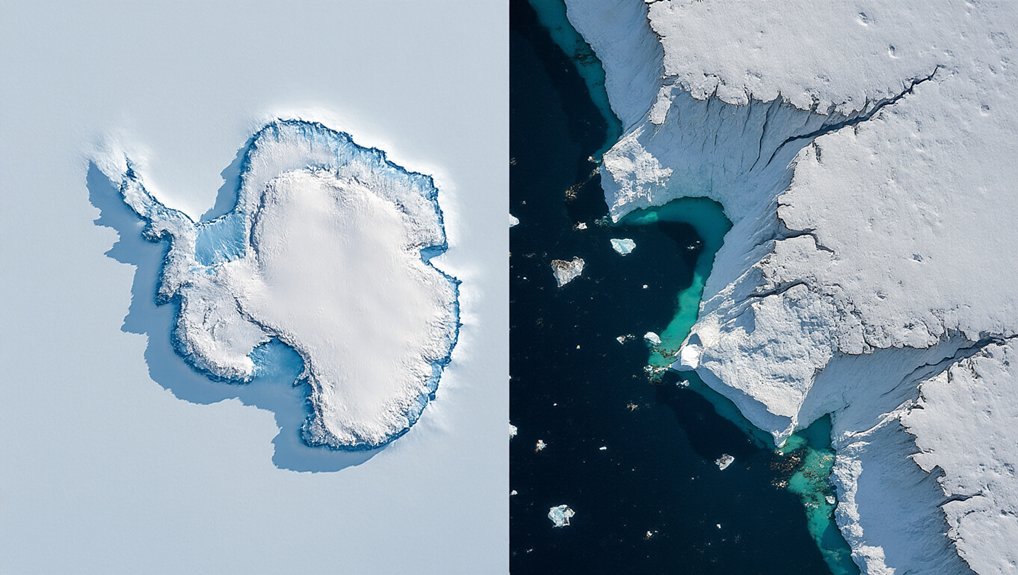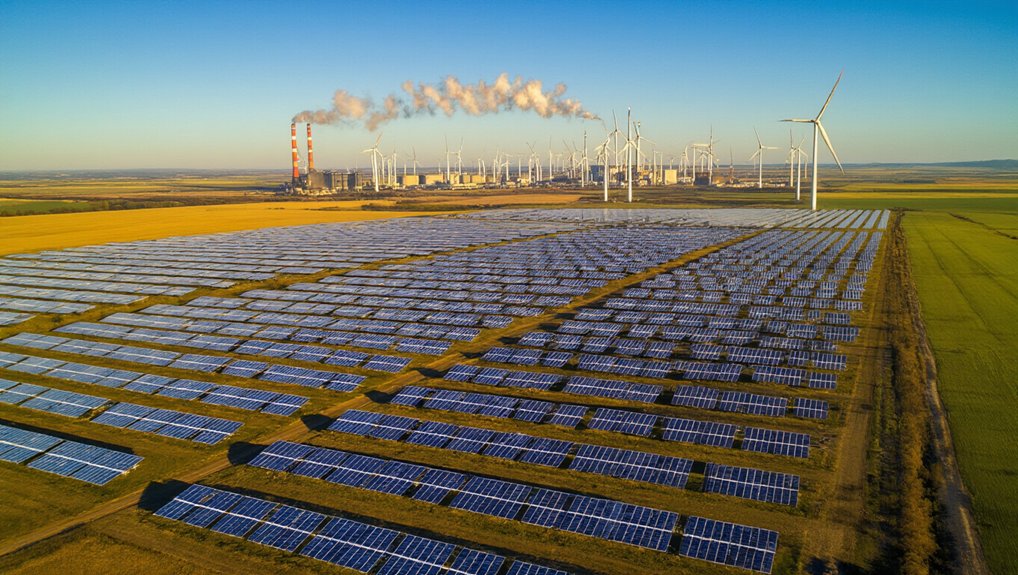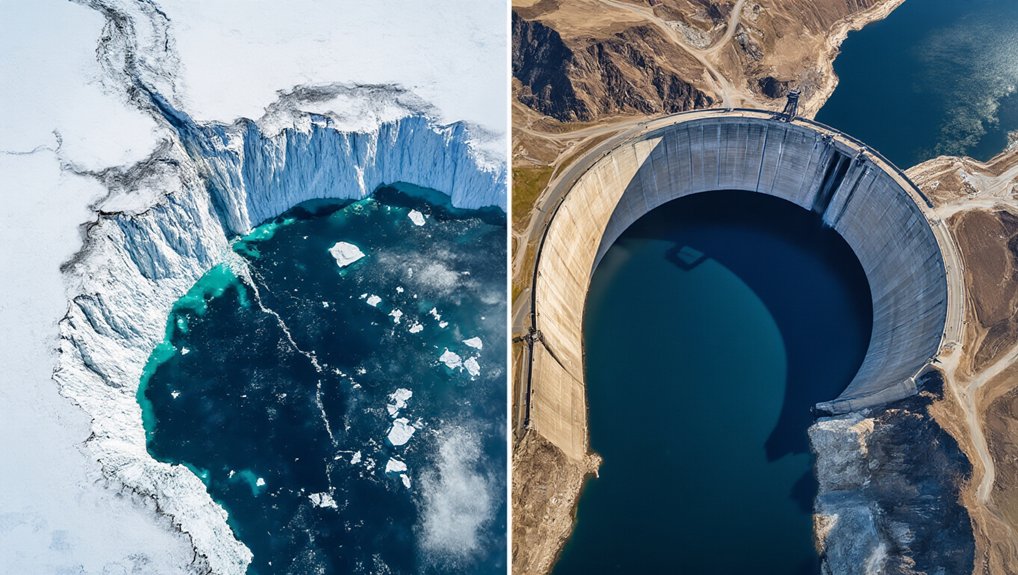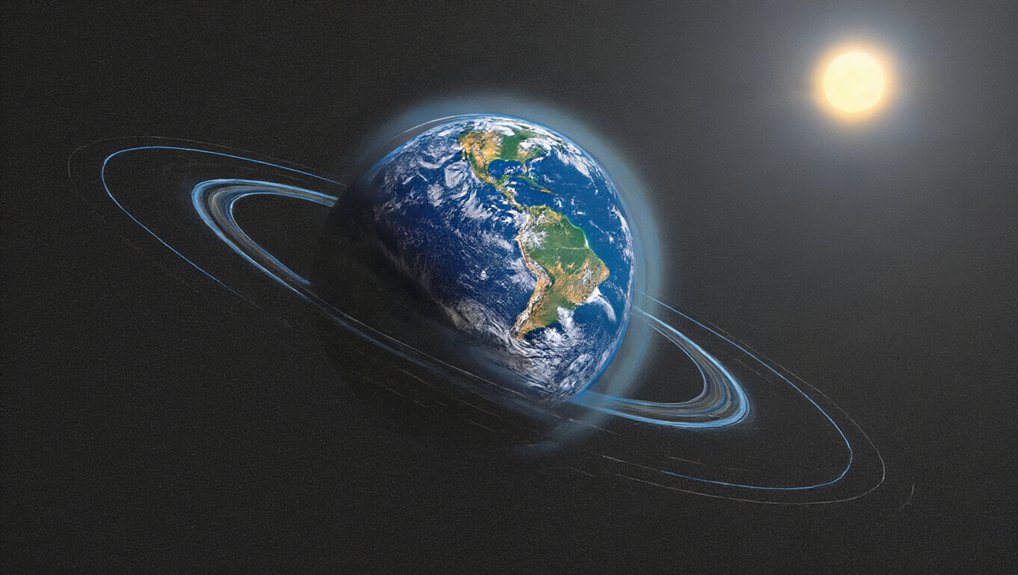While recent headlines trumpet unusually high snowfall in Antarctica, the stark reality remains—the southern continent is losing ice at an alarming rate. Data doesn’t lie. The Antarctic Ice Sheet is shedding about 136 billion tons annually, a trend that’s persisted since satellite measurements began in 2002.
Despite headline-grabbing snowfall, Antarctica continues its alarming ice loss—136 billion tons annually since 2002.
Sure, there was that impressive snowfall from March 2024 to February 2025—nearly 200 billion tons above average. Impressive? Yes. Game-changing? Nope.
It’s classic misdirection. Look at all this snow! Meanwhile, the bigger picture gets ignored. That extra snowfall was concentrated in specific regions—Dronning Maud Land coast, parts of East Antarctica, and around the Getz Ice Shelf. Nice for them. Not so helpful for the rest of the continent.
Sea ice tells an even clearer story. February 2025 saw near-record lows—just 1.87 million square kilometers. That’s 8% below the long-term average, folks. Volume? Down to 1,030 cubic kilometers—a stunning 56% below historical averages. Yikes.
Scientists aren’t fooled by temporary weather patterns. The annual surface mass balance sits around 2,400 billion tons, but overall losses consistently outpace occasional gains. Weather is fickle; climate trends aren’t.
The consequences? Not pretty. If current melting continues, Antarctica could contribute up to 28 centimeters to sea level rise by 2100. And that’s the conservative estimate. Cross certain warming thresholds, and all bets are off.
What’s driving this? Warm ocean temperatures are the primary culprit—not unusual air circulation patterns. These changes in ocean and atmospheric conditions are dramatically accelerating ice mass loss throughout the continent, creating deep uncertainty in long-term projections. The Southern Annual Mode Index stayed neutral during the recent melt season, so we can’t blame weird atmospheric conditions.
East Antarctica did experience cooler-than-average temperatures in 2024-2025, while Dronning Maud Land and West Antarctica ran warmer than normal. This patchwork of conditions creates a complex picture, but the overall trend remains crystal clear.
The temporary snowfall boost is just that—temporary. The long-term diagnosis for Antarctic ice? Still melting. Still concerning. Still reality. Despite the recent cooling over the Antarctic Peninsula in early February, several ice shelves including Larsen C, Fimbul, and eastern Amery exceeded their long-term average melt days by 10 to 30 days.
References
- https://nsidc.org/ice-sheets-today/analyses/antarctic-ice-sheet-2024-2025-melt-season-fast-start-early-end
- https://climate.nasa.gov/vital-signs/ice-sheets/
- https://www.science.org/doi/10.1126/science.adt9619
- https://factcheck.afp.com/doc.afp.com.48FM4ZP
- https://marine.copernicus.eu/news/antarctic-sea-ice-reaches-near-record-low-2025









